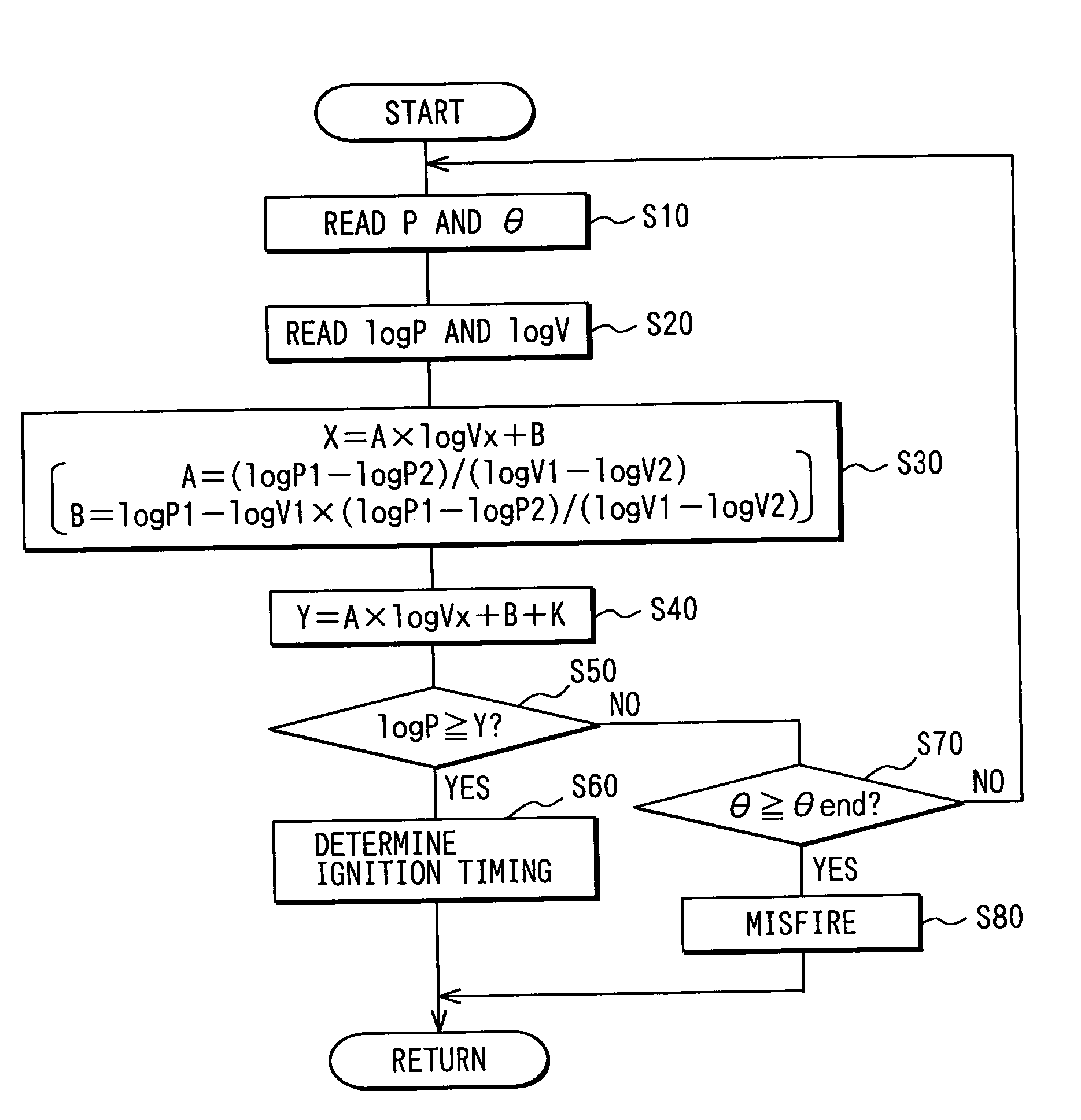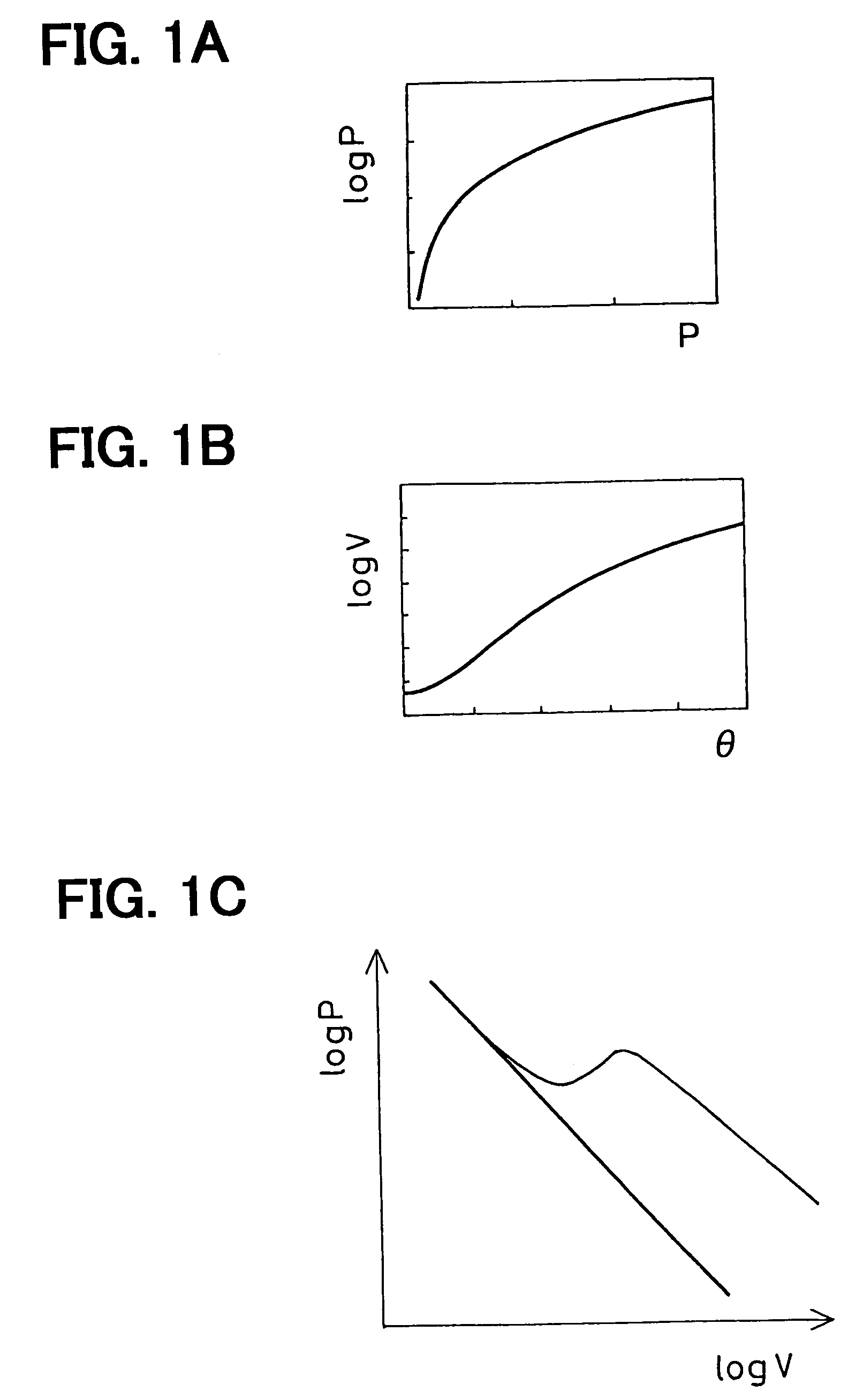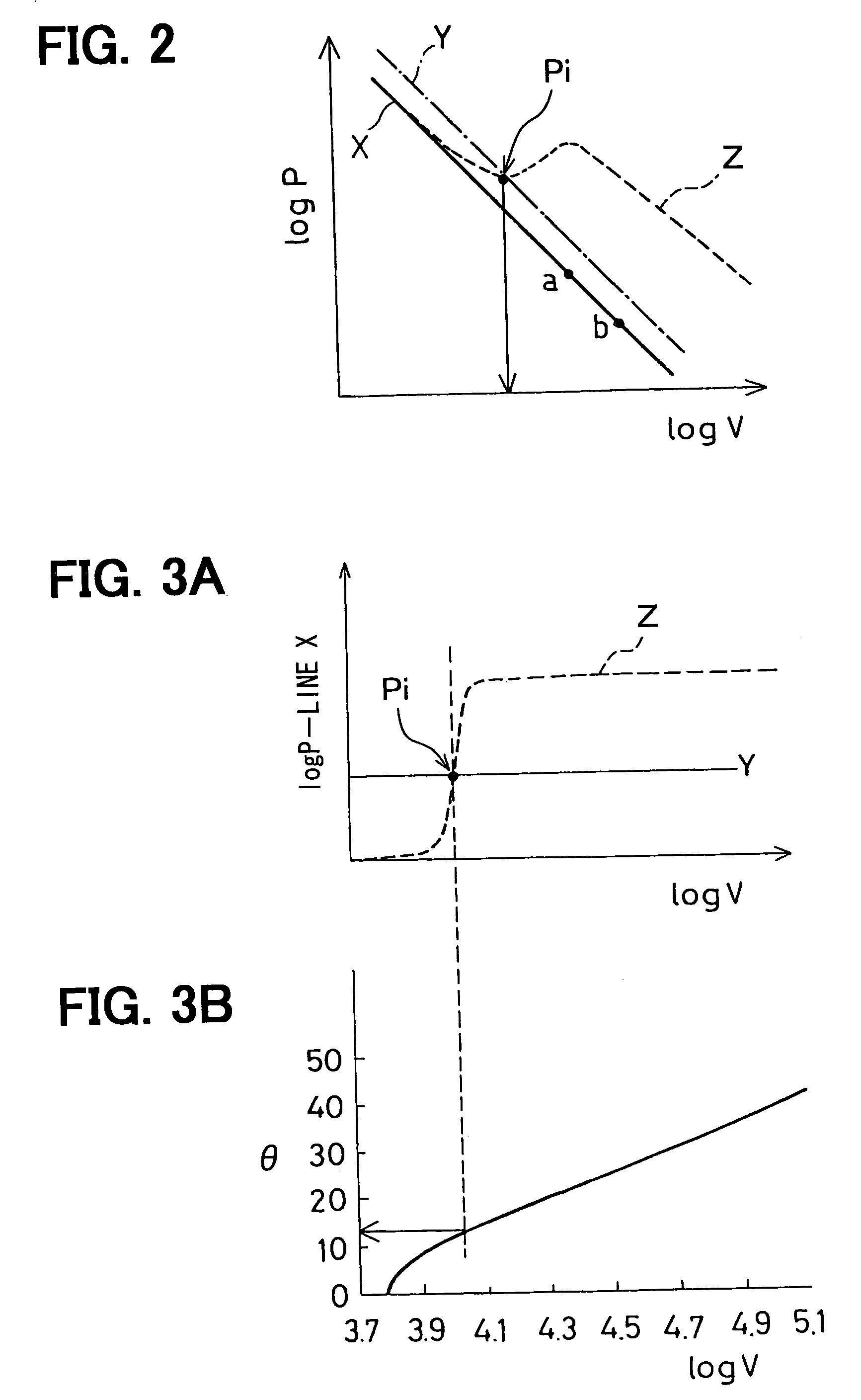Controller for internal combustion engine
a controller and internal combustion engine technology, applied in the direction of electrical control, instruments, calibration apparatus, etc., can solve the problems of deteriorating sensor accuracy of ignition timing tburn, affecting the accuracy of motoring waveform estimation, and heavy calculation load
- Summary
- Abstract
- Description
- Claims
- Application Information
AI Technical Summary
Benefits of technology
Problems solved by technology
Method used
Image
Examples
first embodiment
[Effect of First Embodiment]
[0086]In the first embodiment, the cylinder pressure P and the cylinder volume V corresponding to the crank angle θ at least from the compression stroke to the combustion and expansion stroke are converted to the logarithmic value log P and the logarithmic value log V from the conversion map P and the conversion map V, respectively, and the logarithmic value log P and the logarithmic value log V are read from the logarithm maps, whereby a change in the cylinder pressure P from the compression stroke to the combustion and expansion stroke can be expressed as a logarithmic conversion waveform. This logarithmic conversion waveform is expressed by a straight line having a given gradient before a pressure rise developed by combustion in the cylinder starts, that is, while the cylinder pressure P varies according to only the motion of the piston 4. Therefore, the motoring waveform can be easily estimated from the logarithmic conversion waveform by a linear appr...
second embodiment
[Second Embodiment]
[0090]In this second embodiment, one example will be described in which a plurality of injections are sprayed during one combustion stroke, for example, the second injection is sprayed after the first injection and in which an ignition timing Tburn to the second injection is sensed.
[0091]For example, as shown in FIG. 6A, when the second injection or a main injection Qm is sprayed after the first injection or a pilot injection Qp, as shown in FIG. 6B, a pressure rise developed by the combustion of the main injection Qm occurs after a pressure rise developed by the combustion of the pilot injection Qp and hence a logarithmic conversion waveform varies in the manner shown in FIG. 7. In this case, when the determination line Y of the ignition timing Tburn to the main injection Qm (second injection) is computed by using the motoring waveform as the base line X as described in the first embodiment, the determination line varies for each combustion cycle because of the e...
third embodiment
[Third Embodiment]
[0096]In this third embodiment, a method of determining a combustion finishing timing will be described.
[0097]As described in the first embodiment, before a pressure rise developed by combustion in the cylinder starts, that is, while the cylinder pressure P changes according to only the motion of the piston 4, PVn=constant (where P is cylinder pressure and V is cylinder volume and n is polytropic exponent). For this reason, the logarithmic conversion waveform (motoring waveform) shown in the logarithm map, as shown in FIG. 9, is expressed by a straight line having a given gradient. Here, when the gradient of the logarithmic conversion waveform to the logarithmic value log V is expressed by a graph, as shown in FIG. 10 (the vertical axis is gradient and the horizontal axis is logarithmic value log V), the motoring waveform (base line X described in the first embodiment) is expressed by a straight line having a constant gradient and parallel to the horizontal axis in...
PUM
 Login to View More
Login to View More Abstract
Description
Claims
Application Information
 Login to View More
Login to View More - R&D
- Intellectual Property
- Life Sciences
- Materials
- Tech Scout
- Unparalleled Data Quality
- Higher Quality Content
- 60% Fewer Hallucinations
Browse by: Latest US Patents, China's latest patents, Technical Efficacy Thesaurus, Application Domain, Technology Topic, Popular Technical Reports.
© 2025 PatSnap. All rights reserved.Legal|Privacy policy|Modern Slavery Act Transparency Statement|Sitemap|About US| Contact US: help@patsnap.com



